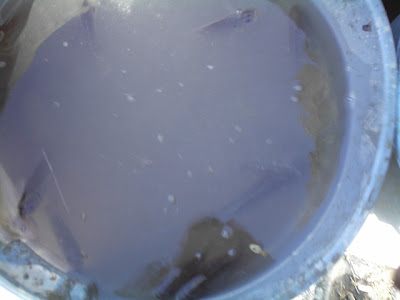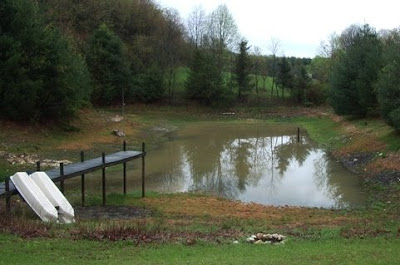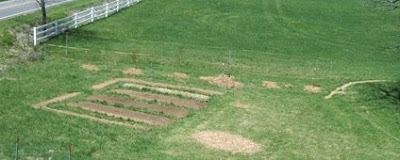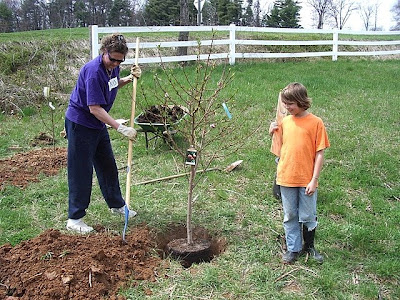When we first purchased this farm in the summer of 2005, this part of Virginia had been experiencing normal and above normal rainfall for a couple of years previous to this time and the pond was full.

By the spring of 2007, precipitation had more below normal than above normal months, but the pond was still full enough to do some paddleboating. In the first picture you can see a measuring bar which indicates the position of the pond drain plug about 8 feet below the top of the bar. The other picture shows the overflow drain which would be the maximum depth the pond could reach.


The spring and summer of 2007 saw very little precipitation and the area entered into a drought classification according to the United States National Drought Monitor. By late summer, the pond level was almost to the bottom of the measuring bar. The picture below shows almost the entire length of the measuring bar exposed. The overflow drain is well up the bank on the right side of the photo. That is quite a contrast to the pictures above showing the relative water level to these structures.

Unfortunately we had chosen the fall of 2006 and spring of 2007 to stock our pond with several hundred game fish. However, by late summer, with the pond level so low, we had to remove as many of the fish as we could to a friend's pond whose water level was faring better than ours during the drought. There was nothing in the long range weather forecasts to indicate a weather pattern shift that would alleviate the drought conditions. If the fish weren't moved to deeper water they would die from oxygen starvation. Using a cast net we caught as many fish as we could and put them in 55 gallon trash cans filled with fresh water for the journey to their new home. We estimated about 800 fish were rounded up and transferred during our 'fish rodeo'.



The pond level fluctuated at or around this level since last summer. Sometimes it would drop even further below this level and then come back up after one of our infrequent rain or frozen precipitation events. However, this last round of rain since Saturday night has seen the water level rise to its highest level in quite some time.

Although the pond still has a ways to go before we can get the paddleboat afloat again.

The spring is flowing nicely today. During the past several months, its flow had slowed to just a trickle.

























